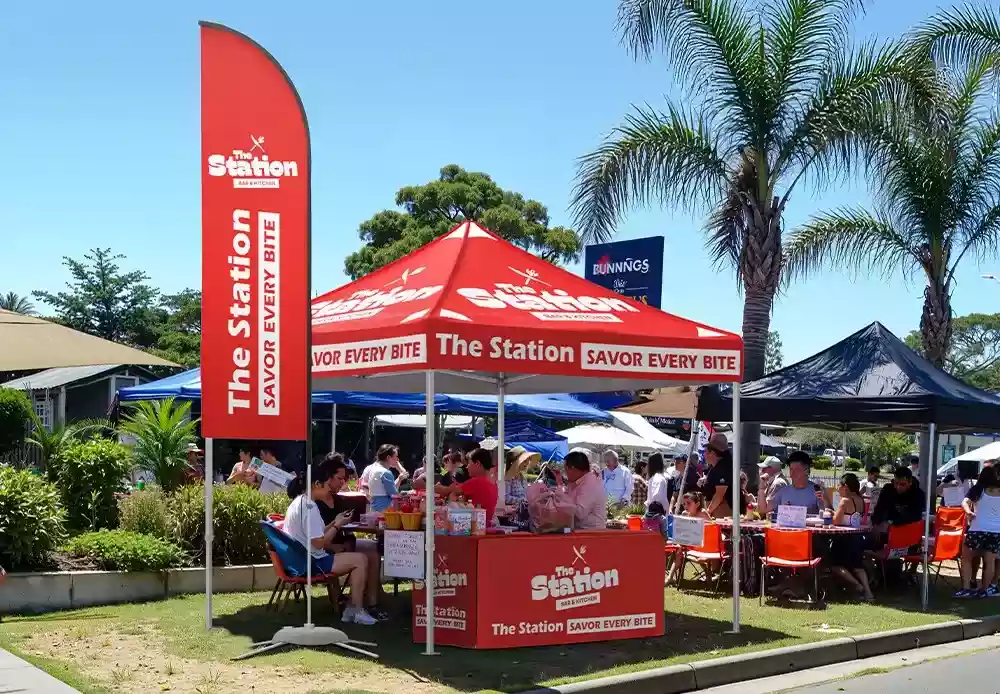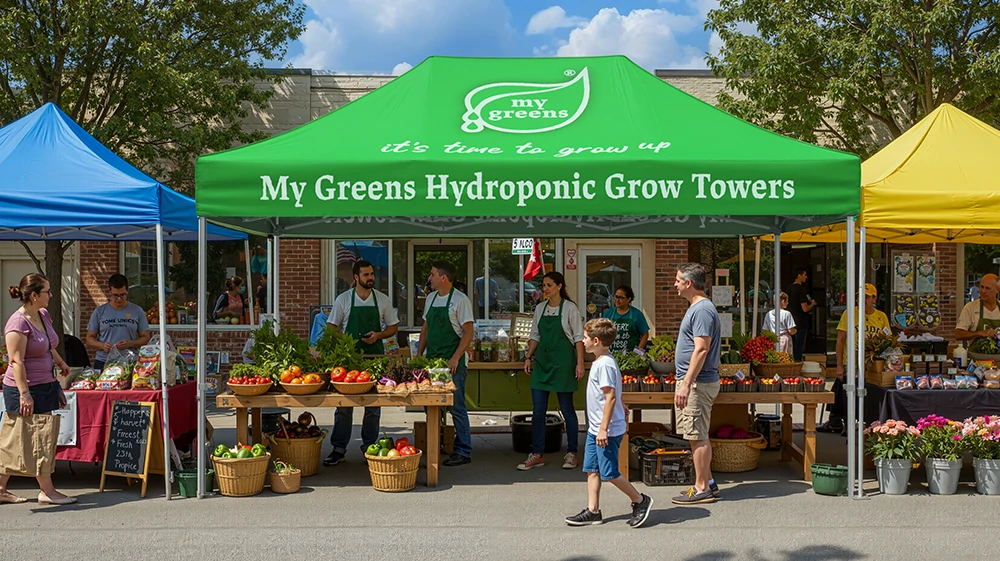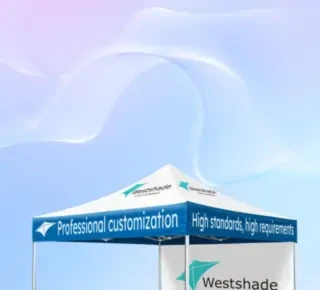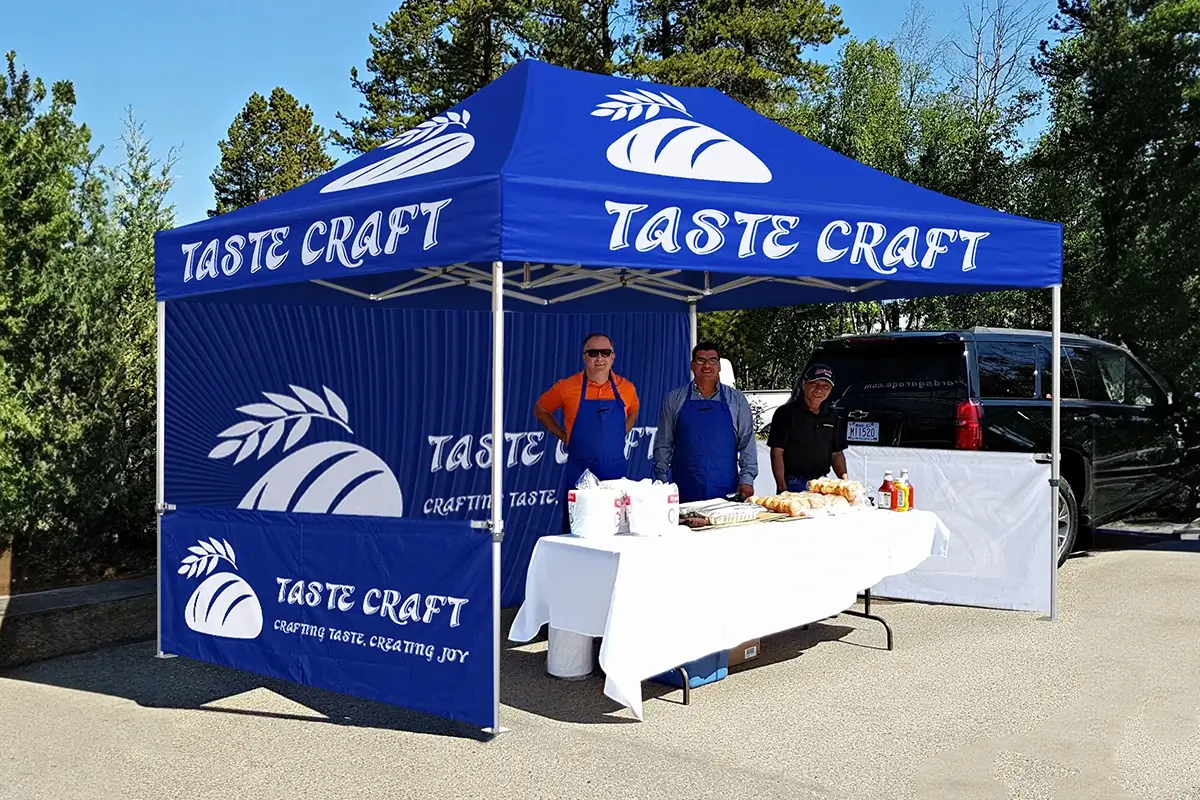
Whether you’re setting up at a local farmer’s market or a large food festival, a food vendor tent is essential for your success. It’s an investment that enhances your brand visibility and keeps your operation running smoothly.
A well-chosen and properly setup tent for food isn’t just about shelter; it’s about creating a secure, organized space for preparation, service, and branding. As a novice vendor, why not start your preparation by setting up a tent?
In this blog, we’ll guide you through everything you need to know about food vendor tent setup, from choosing the right tent for your needs to the essential steps for a quick setup. Let’s get start!
Choosing the Right Food Vendor Tent
There are various types of tents available on the market. By understanding the advantage of each, you can make an informed decision that suits your needs and budget. Let’s take a look at some popular options:
Pop-Up Canopy
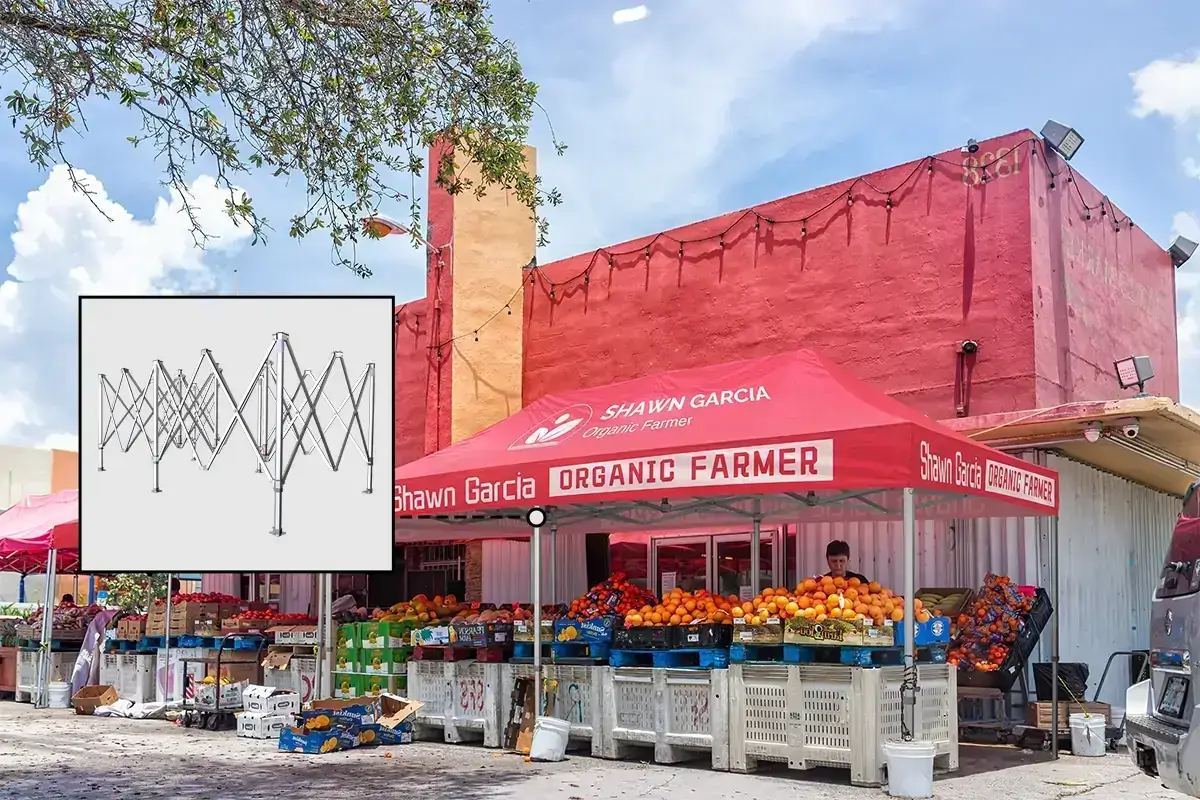
Consisting of a collapsible frame that expands easily, with a fabric roof, the pop up food tent is always the popular choice.
- Ease of Setup: Simple installation steps, often requiring just one or two people and a few minutes.
- Portability: Lightweight and compact, they are easy to transport and store.
- Affordability: They are generally the most cost-effective option.
- Versatility: Available in various sizes and customization options, suitable for a wide range of events, from farmers’ markets to street fairs.
Frame Tent
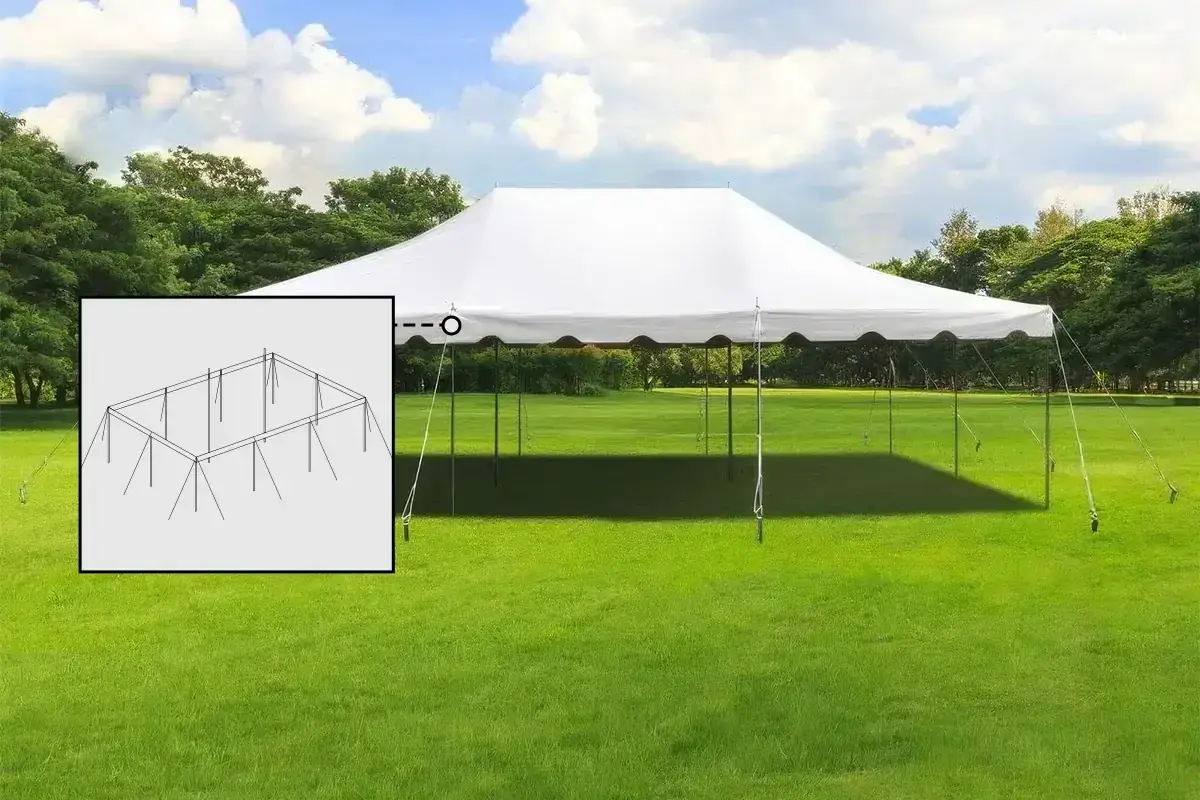
A frame tent is a sturdy, free-standing structure with a metal frame, offering more durability and headroom than pop-up tents, ideal for larger events and harsh weather.
- Increased Stability: They are built to handle stronger winds and inclement weather
- Larger Sizes: They are available in significantly larger sizes, offering more workspace.
- More Headroom: The design often allows for more vertical space inside.
Inflatable Tent
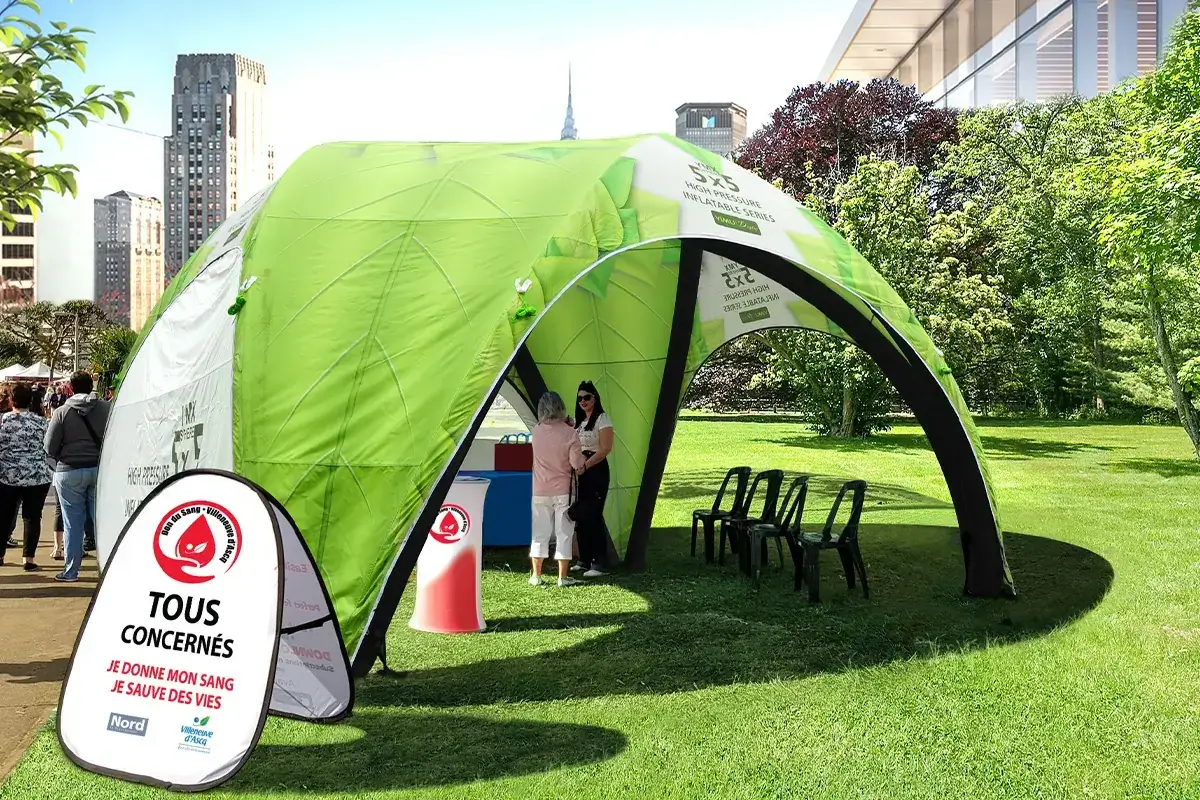
Inflatable tents use sealed air beams instead of poles for structure, are quickly inflated with a pump, offering easy setup. It is a less common but increasingly interesting option for food vendors.
- Unique and Eye-Catching: Their fun and modern design makes them a great marketing tool.
- Easy Setup: Simply follow the instructions to inflate the tent.
- Relatively Lightweight: Without the weight of metal frames, they are lightweight and easy to carry.
Factors You May Consider for Tent
Beyond the basic types, consider several factors before you make the final decision:
Budget
How much are you willing to invest in your initial setup? We recommend that you invest in a high-quality tent for long-term savings, as it withstands weather and reduces repair or replacement costs.
Size
Make sure the tent is large enough to accommodate your equipment and provide a comfortable area for customers. Popular sizes for food booth tents include 10×10 and 10×15 ft.
Portability
Consider how easy the tent is to transport and set up. If you are not a fixed stall, then you’ll need to set up and move the tent every time. Look for food tents that are lightweight, collapsible, and easy to carry, with a compact design for convenient storage.
Weather Conditions

A weatherproof, UV-resistant pop up vendor tent is a must to handle all weather conditions. If you frequently vend in areas with high winds or heavy rains, consider opting for a more robust and heavy-duty tent with better water resistance.
Safety
Since it’s a food stall, fire resistance is essential for ensuring safety during operations. Be sure to choose a tent made of flame-retardant fabric, including both the canopy and sidewalls, to meet safety standards and provide reliable protection.
Customization
A custom food tent with your branding or logo can help you stand out and attract more customers. Besides, you can choose thicker, more durable fabric for a custom business canopy, offering better weather resistance. If you’re interested, check out Westshade’s high-quality, durable options. We offer you premium tents and first-class custom service, with free design support included!
Setting Up Your Food Vendor Pop Up Tent
The outdoor food vendor tent setup may seem daunting at first, but with some preparation and practice, it becomes a breeze. Here’s a setup instruction video for the 10×10 custom canopy tent. For more details, check out our guide on setting up a tent.
Maintaining and Caring for Your Tent
Since canopies are exposed to the elements, debris like dust, gravel, bird droppings, and rain can dirty the structure. No one wants to buy food under a dirty tent. Regular care will help extend the lifespan of your pop up food stand and keep it looking professional at every event.
- Quick Clean: After every takedown, try to do a quick wipe-down to remove food spills, dirt, or any debris that may have accumulated on the fabric.
- Avoid Storing Wet: It’s important not to store your tent while it’s still wet, as this can lead to mold and mildew growth. If you can’t dry it completely, make sure to store it in a dry, well-ventilated area.
- Inspect for Damage:Regularly check for signs of wear, such as small holes, rips, or frame issues. Early detection can help you avoid more costly repairs down the line.
If you’re not planning to use your tent for a while, check out our canopy tent storage guide to keep it in great condition.
Additional Tips for Food Vendor Success
Putting up your tent is the first step towards success, the next step is to build your booth. Here are some food vendor tent ideas to drive traffic and increase sales.
Tip 1: Stand Out with Custom Branding
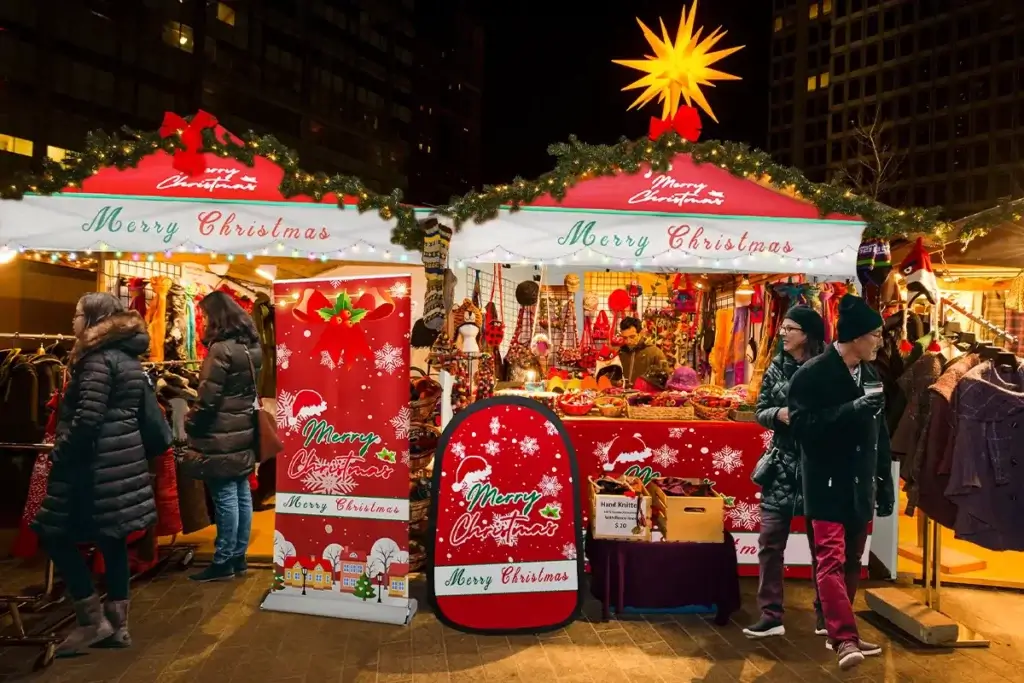
Invest in custom printing to showcase your logo, menu, and special deals. In addition to a custom canopy tent, event signage like banners, flags, and table covers can help attract more customers and create a professional appearance.
Tip 2: Organize Your Space
Keep your booth tidy and organized for a smooth customer experience. Arrange your cooking area, food prep stations, and cash register to ensure smooth customer flow and easy access.
Tip 3: Stay Prepared for Weather
Be sure to have extra weights or anchors on hand to secure your tent in case of wind or rain. A weather-resistant canopy tent with sidewalls will help protect your food and equipment. Westshade custom sidewalls are particularly convenient. They are designed for easy installation and removal, offering both versatility and security while maintaining your booth’s professional appearance.
Conclusion
Properly setting up and maintaining your food vendor tent will give you a solid foundation for success. By considering important factors such as size, durability, and ease of transport, you can ensure your tent works efficiently at every event. Proper maintenance are essential to keep your space safe, clean, and professional. Don’t forget to secure your tent with extra weights and custom sidewalls to protect your food and equipment.
Whether you have questions or are ready to make a purchase, we’re here to help. As a professional tent retailer, we offer a wide range of high-quality products designed to meet the unique needs of food vendors. Contact us today to make your food vendor tent setup easy and stress-free!
